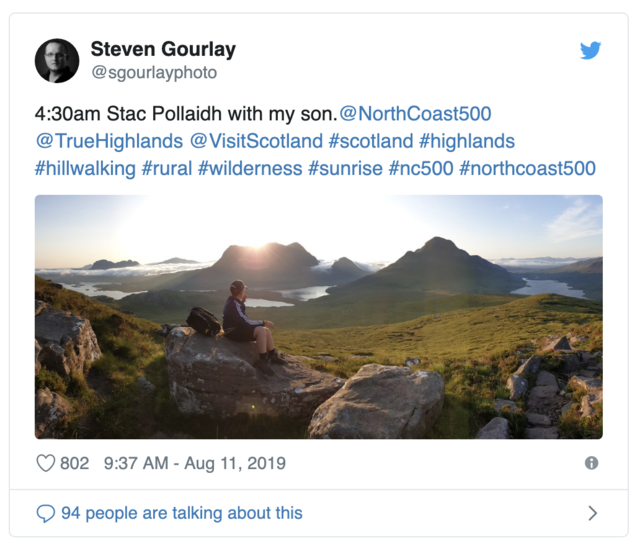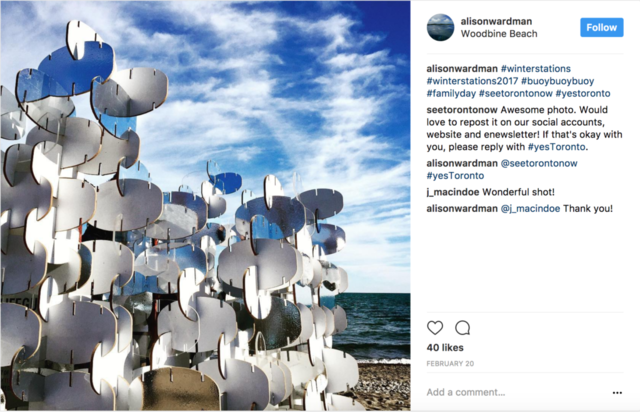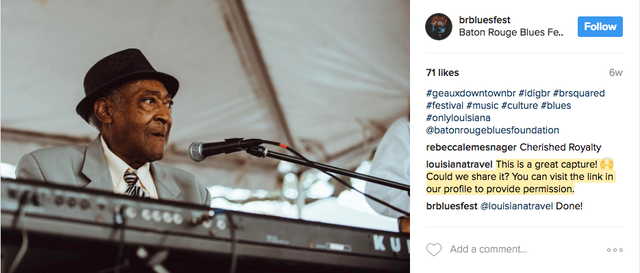UGC - Top Questions From Marketers

Using User-Generated-Content (aka UGC), versus your owned or licensed content can be tricky and it’s often not clear exactly what usage rights you have.
We look at 5 most common UGC questions asked by Marketers:
- What are the benefits of using UGC?
- Is it OK to use UGC in our brand marketing?
- Do I need to ask permission to use UGC?
- When should I seek rights to UGC?
- How do I get rights to use UGC?
While this article is not a substitute for proper legal advice, let’s take a look at the questions you might have about the benefits and issues when using UGC in your marketing.
1. What are the benefits of using UGC?
Let’s start with the top 5 reasons to use UGC from a Marketing perspective.Visual Content Supplies are running thin.
1.1: Fuel your marketing machine
It’s well understood that you need visuals in your content marketing for better engagement. We also know it’s hard work to find, create and curate enough visual content to keep the content/social media marketing machine cranking.
Maintaining quality and regular cadence is important in content and social media marketing. Failure to maintain and update a sufficient inventory of visuals is going to unnecessarily constrain your marketing activity.
There’s an almost unlimited number of images on social media channels that you should be able to tap into. Most likely more than enough for you to repost as is or re-purpose (subject to the caveats we discuss below).
1.2: Limited Marketing Budgets
We all need more visual content, but it can be expensive to create or license content. UGC helps fill in the gaps, with potentially, an unlimited supply of low cost (if not free) content.
While UGC is never totally free of cost (it takes time and effort to find and secure usage rights for UGC), it’s generally going to be cheaper than commissioning your own creative or licensing the work of a professional photographer.
1.3: Humanizing your marketing
Storytelling is one of the most important things we do in branding and making your customer the hero of that story has been the key to engagement forever. UGC is so powerful because it enables the customer to be the storyteller and often the hero in the story.
This is not only super engaging for the person whose content is being shared, but also more relate-able to consumers of that content.
When TINT polled marketing professionals for its 2018 User-Generated Content Marketing Report, the most-cited advantage of UGC was its ability to “humanize marketing”, with 73% agreeing this form of content “makes marketing more authentic.”
1.4: Build a community
When using UGC on your website or social media accounts gets noticed by people, they are often interested in joining in. It’s a human trait that we want to belong, follow the crowd and join in. We can’t help ourselves. With UGC we can imagine ourselves in the picture, visiting that place, enjoying that experience and when we finally do - we want to share that with the community too.
For example, social media management platform Buffer introduced the [#BufferCommunity] (https://www.instagram.com/explore/tags/buffercommunity) hashtag on Instagram and receives regular submissions from all around the world.
The content – which is frequently re-grammed on the company’s official account, with credit – isn’t promotional, but it’s not supposed to be. It brings the product’s users together and raises general awareness for the brand.

1.5: Build trust with social proof
Consumers find user-generated content more trustworthy - customers have grown tired of overly branded content, so it is quite easy for them to tune it out. What they cannot help but respond to, however, is authentic content generated by fellow customers.
2. Is it OK to use UGC in our brand marketing?
Yes absolutely, on the proviso that:
- It’s Authentic - you should only use UGC that is authentic or appropriate for your brand. Is the content in question about you, your brand, your products or services. If it is great. If not - then don’t use it. For example, it’s perfectly fine to feature a photo featuring your region - if you are the Tourism brand for that region. It’s Not OK to use a photo of a Mountain Biker riding a trail from someplace else.
- It helps tell your story. - if it’s not on brand or doesn’t add anything to your brand story, don’t use it just for the sake of it. Think quality over quantity.
- You give attribution - even if legally speaking you don’t explicitly have to give attribution, you always should. It’s the right thing to do ethically, morally and is more authentic to boot.
- You get permission - If you’re using someone else’s content you’ll most likely need their permission. More on this below.
3. Do I need to ask permission to use user-generated content?
Well, that depends.
- YES - if you want to use outside the originating social media platform (including reposting on our own Instagram account).
- NO - if you all you want to do is share or reshare on the same social media platform or embed on your website/blog with a link back to the original post (in the originating platform).
Let’s dig in a bit further… Generally speaking all UGC is subject to copyright, so the original creator of the UGC owns and has copyright for that content. So if you want to use that UGC, say a photo in your marketing, on your website, in a brochure, or upload to your Asset Library for distribution. Yes, you will have to get permission from the creator/owner of that content.
Sharing/Reposting However, if the UGC is found on Social Media, slightly different rules may apply in some usage scenarios. Each social media platform has its own specific terms and conditions that generally (and controversially) gives it, rights to freely use, publish, reproduce, display and distribute the content that is posted to its platform.
This a huge advantage for these social media platforms and is how they have grown so fast and so large via - network effects.
So when a creator uploads a photo to Instagram, for example, they are giving away some rights to Instagram. If you are reposting or sharing UGC via the originating platform, you, therefore, don’t need to secure permission from the creator. This includes:- Embedding a Tweet or Instagram photo onto your blog.
Like this Twitter embed below.

Displaying content through an API, that uses Instagram, Twitter, and Facebook’s API to display photos, and abides by all their separate terms & conditions. For example, at Brandkit, we use the Strea.ma service to display Twitter, Facebook and Instagram images mixed with owned content stored in Brandkit.

4. When should I seek rights to UGC?
Whenever you want to use UGC (e.g. a photo on Instagram) outside of the originating social network, you will need to request permission to use.
This would include these situations
- Reposting a photo to your own Instagram account. (This requires downloading the photo and uploading it again).
- Using the content in digital or print ads.
- Displaying the content on your website without a link back to the original post.
- Displaying a modified version of the content.
- Uploading content to your DAM for redistributing.
For example: In the case of Instagram, many brands curate, and post, user-generated-content to their own account. To do so they would have to download the image and re-upload to their account. This means the brand would need to get permission of the copyright holder (creator/owner) - before doing so. You should also display information about the source of the content. You see this a lot with something like “Photo by …”
Here’s an example from @BestDestinationPhotos below

5. How do I get rights to use UGC?
Ok so you want to use some awesome UGC you found, and you now know that you need to get permission to use that UGC.
How do you do it? Just ask!
You’d be amazed how generous people can be if you ask nicely. Most folks are generally happy for their photos to be used by you, but you still need to ask and get explicit permission.Of course, we all love the recognition, especially if it’s a famous brand or from a place, we recently visited and loved.
You can ask directly and explicitly on a post. Here’s an example from Tourism Toronto!

- Show that you appreciate their work with a compliment (e.g. Awesome photo)
- Tell them how you’d like to use their photo (e.g. …repost it on our social accounts, website, and enewsletter.)
- Give them a way to explicitly say “yes” (e.g. …please reply with #yesToronto)
If your company has more rigorous legal requirements you can ask for more explicit confirmation and ask them to formally accept your UGC Terms when granting you usage rights.
Here’s an example from @louisianatravel

You can send users to a custom UGC Terms page, ask them to read and accept terms and once accepted, provide them with a special hashtag to include in the post or ask them to authenticate with their social account.
This terms page could be a simple custom page on your website, a web form attached to your CRM or a special smart page designed specifically for this purpose. Many Brand Management, DAM and UGC service providers including Brandkit™ can configure this for you.
In summary
So long as you are aware of the Usage Rights issues, respect copyright owners, and take your time to cross the “t”s and dot the “i”s, it’s a relatively straight forward process.
If you’re not confident or want to ramp up your use of UGC with automation, there are numerous options, including Brandkit.
Have a question about UGC? You can talk the Brandkit team anytime.
UGC - Top Questions From Marketers
Using User-Generated-Content, versus your owned or licensed content can be tricky and it’s often not clear exactly what usage rights you have. We set out to help demystify the subject for you.
